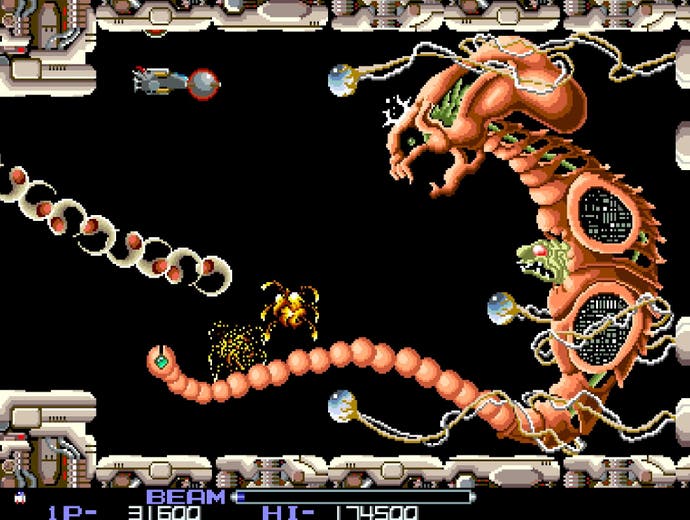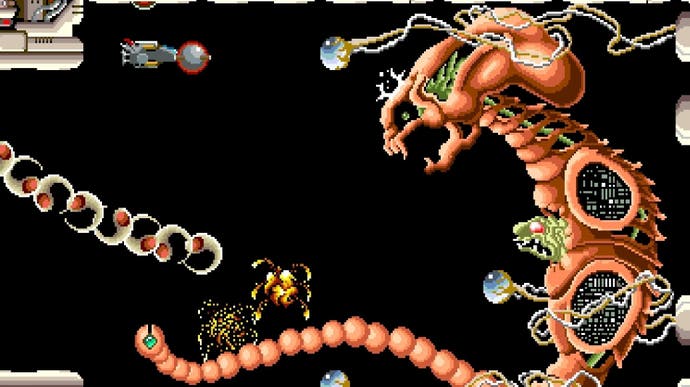Always on Edge: my life with Jason Brookes
One man's impact on the best gaming mag of the 1990s.
In the autumn of 1995, I interviewed for a writing position on Edge magazine. I had no experience in publishing; I'd spent a year since leaving university writing manuals and design documents for the developer Big Red Software, but I was desperate to be a journalist. Although I hadn't read Edge that much, everyone I worked with treated it like a holy text. It felt like a long shot. Then Jason Brookes turned up late for my interview, was friendly but distracted throughout, and at the end set me a writing task before disappearing completely. I assumed I had failed. Over a month later however, he called me and offered me a job. This was my first inkling that Jason had his own way of working.
Three days ago I got a call from Simon Cox who joined Edge just after me and later became deputy editor. Jason had been ill for three years - he died in the early hours of Monday morning. Between long difficult pauses, Simon and I swapped a few stories about our time on the magazine. I put the phone down and cried, and thought about Jason. That's what I've been doing ever since.
Jason Brookes began his journalism career at the cult Super Nintendo magazine SuperPlay, under the tutorage of launch editor, Matt Bielby. He'd originally applied for a job on the Sega magazine, Mega, but editor Neil West soon realised Brookes was a complete Nintendo fanboy and pushed him Bielby's way. "From the start, we were influenced by Japanese magazines - not just games mags, but women's mags, car mags and anything else we could get our hands on - as well as Japanese comics and anime," says Bielby. "What struck me about Jason was just how much he knew about and loved Japanese culture - and gaming in particular, and Nintendo especially amongst that. He knew more about all of it than the rest of us put together.

"Getting reliable info on Japanese games was a painful, time-consuming business in the pre-internet days, involving late-night phone calls to the other side of the world, local language students doing vaguely comprehensible translations for us from Japanese magazine articles, and all sorts of palaver. Jason was intrinsic to this."
As there were so few SNES games officially released in the UK each month, the SuperPlay team was forced to scour the obscure grey import market - and this was Jason's forte. "Even if the average SuperPlay reader was never going to buy Super Wagan Island or Zan II, the fact that it existed and we could tell people about it added to the unique feel of the magazine," says Beilby. "Jason would find all sorts of obscure stuff that I, for one, couldn't get my head around at all. It became his territory in a way, and his enthusiasm made us all consider the most oddball releases in a new light."
In 1993, Future Publishing's magazine launch specialist Steve Jarratt was looking for writing staff to help with an ambitious project. It was a new type of games magazine, eschewing the pally, hobbyist tone of most publications of the era in favour of a serious, refined, journalistic style, inspired by visual effects mag, Cinefex. That project was Edge. "He made a huge impact on the magazine," says Jarratt. "He filled in a lot of the gaps in my knowledge - he brought with him his love of Japanese culture, games and game art - and at the time, that was where all the innovation was coming from. He opened Edge up. He was fortunate, too, because I wasn't so keen on travel at the time so he did all the trips to the US and Japan!"
His first issue as editor was Edge 11, which featured a series of exclusive articles on the forthcoming PlayStation console, which at the time was still known by its codename, PS-X. Jason and Jarratt had been invited by Sony's third-party development manager Phil Harrison to view the legendary T-Rex graphics demo being touted to developers, and Jason later secured interviews with staff within Sony Computer Entertainment Japan, as well as at Namco, Konami and Capcom for the big reveal feature. Over the course of ten packed pages, the magazine communicated the importance and potential impact of this vital newcomer to the games industry. As a knowledgeable fan of dance music, Jason also perfectly understood Sony's determination to align PlayStation with the ascendant 1990s club culture, running several articles on the machine's groundbreaking marketing and its relationship with hip brands such as Ministry of Sound and Designers Republic. He saw that both the audience and industry were maturing, and that popular culture would have to cede ground to video games. He just got it.
The Edge office in the mid-1990s was a cross between a university halls of residence, a night club and a game development studio - an atmosphere utterly presided over by Jason. He was an unapologetic perfectionist, determined that every page of the magazine exemplified the Edge vision of style and substance. He would spend hours choosing exactly the right photograph or screenshot for even the most minor preview, and my abiding memory of him is hunched over a lightbox, examining 35mm slides from some Japanese arcade trade show or obscure Shibuya-based development studio.
Everything would always come together at the last possible minute. The magazine flatplan - the page layout guide that showed writing and art staff what each issue would contain - was almost always virtually empty until the week before deadline. Then suddenly, Jason would announce that he'd secured an interview with Howard Lincoln or Miyamoto, Peter Molyneux or Bill Gates, or an exclusive look at some amazing new AM2 arcade game, then we'd be off. He'd trust us too. I remember the day Susie Hamilton from Derby-based developer Core Design (then best known for aging Mega Drive title Thunderhawk) brought their latest project into the office for us to see - something called Tomb Raider. Jason wasn't interested so me and production editor Nick Harper had a play during our lunch hour. I think within five seconds we were over at Jason's desk, saying "Um, we think you'd better come and have a look at this." Straightaway he gave it two pages. Deadlines would often involve two or three all-night sessions, the whole team writing and laying out pages as Orbital blasted from the stereo. It was hard work, but it was fun. We'd smuggle beer in, and Edge's art editor Terry Stokes, an inveterate prankster, would set up elaborate traps for us around the office.
What did I learn during this fraught, tense, hilarious nights? I learned everything about writing quickly, about getting the best from poorly translated interviews, about how every sentence needs to carry a fact or idea that takes the story forward. Jason hated waffle, he hated mediocre, colourless writing. He wanted us to communicate the joy of a Treasure shooter, the technological magic inherent in a lit, textured polygon, the underlying philosophy of an executive soundbite. He thought deeply about games and how they functioned. His favourite was R-Type and to hear him break it down was to hear a Nobel prize-winning scientist explaining DNA strands. As Jason's brother Matthew recalls, "He loved the passionate attention to detail, the creativity, the huge sprites, the multi-layered parallax, the colours, and even the superlative collision detection. I'm not sure how long he must have spent playing and eventually completing that game."

Jason didn't teach us how to make a magazine, he just expected us to know. When I turned up to the Edge office on my first day of work, he told me to take screenshots of Sega Rally. I didn't know what the hell that meant, I had no idea of the process. I just had to go over to the Sega Saturn, plug the leads in, figure out how to use the Apple Mac connected to our CRT gaming monitor and get on with it. Sometimes, he'd disappear to Japan or LA for a week and you wouldn't know when he was coming back, you'd have to piece together his intentions from vague emails and editorial meeting notes. That's just the way it worked, we all knew it. You figured stuff out. And then he'd return and flip through the latest issue of the mag and say "you did a really good job on this article" and my god, you'd glow with pride all day.
His perfectionism at Edge lasted until his very last act at the magazine - his final Editor's Intro. "I just remember how long it took him to craft it," says production editor at the time, Jane Bentley. "That sign off was the most agonising 300 words I've ever seen someone write and rewrite. I think I came out in hives having to stay up all night for final sub checks before the mag could get biked off to the printers. But Edge was a magic world back then. A real gang of super fans."
After this, he moved to San Francisco writing for US magazines Xbox Nation and GMR as well Japanese publications LOGiN and Famitsu. More recently, he got back into pure design, helping indie studio 17-Bit Studios create its website.
A few months before he died, we all attended Simon Cox's wedding in the Cotswolds. I sat next to Jason for most of the reception, and we reminisced about the olden days. At some point quite late on, after a few glasses of champagne, I said to him, "when you gave me the job on Edge, you changed my life. Everything I have done in writing after that is really down to you." He just smiled at me in that charming and slightly airy way of his. I hope I have lived up to whatever it was you saw in me on that warm autumn afternoon long ago.
This is what I have learned from Jason Brookes: be good at what you do. Take care. Make every sentence you write, every image you capture, every idea you foster mean something. And if you are given the chance to thank someone for helping you, take that chance. In fact, do it now. Email them, text them, put down your phone or close your laptop and go find them. Tell them what they did. Because life can be cruel, and important people are sometimes taken away too soon. Jason, you were brilliant, difficult, talented, chaotic, spiritual and loving. You always ended your editor's intros with a single phrase - the future is almost here. That's how you lived - with one foot in next week, or next year, or the next decade even, waiting with a smile on your face for the rest of us to catch up.

